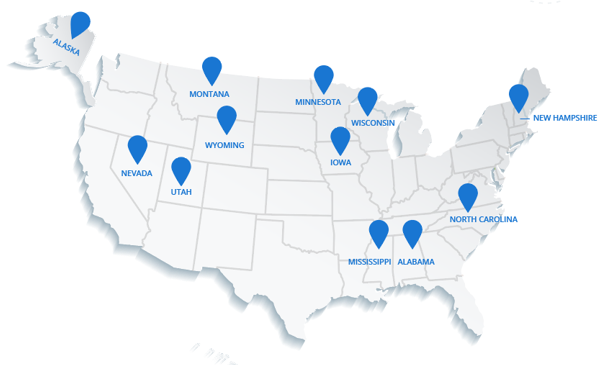To apply for exciting and relevant NP, CRNA, and PA jobs in your region, click on the links below:
Nurse Practitioners (NPs) and Physician Assistants (PAs) work in hospitals, clinics, home health, and telemedicine to provide care for patients. NPs, PAs, and CRNAs scope of practice includes: Conduct H/Ps Manage clinical emergencies, Develop differential diagnosis Prescriptive authority, Assign a diagnosis Bill independently, Perform invasive procedures, Hold a DEA certificate, Order diagnostic tests and therapies, Participate in quality/safety activities, Interpret and evaluate tests and therapies, Participate in organizational research, Coordinate care and delegate appropriately, Serve on organizational committees, Provide consultation, Teach interprofessional teams, Counsel patients and families, Services are billable by the organization, Initiate referrals, Document in the medical record. In some states NPs and PAs, collectively referred to as Advanced Practice Providers (APPs), have Full Practice Authority (FPA) and can even start their own practice to see outpatient primary care patients. Other states require APPs to have physician supervision. Regardless of state regulation, all APPS within hospital settings work collaboratively on a team of physicians, nurses, and other members of the healthcare model to provide patient care.
There are 7 practice areas where you will find NPs and PAs:
- First Assistant or Anesthesia in the Operating Room
- Critical care units, such as Neonatal, Pediatric, Medical, Surgical, or Cardiac Intensive Care Units (ICUs)
- Acute care units, which are inpatient units in the hospital such as cardiology, pulmonology, general pediatrics, labor and delivery, or medical and surgical units
- Outpatient care in a clinic in a variety of settings such as speciality care clinics in a hospital, primary care, surgical centers, or urgent care
- Telemedicine, providing patient care virtually
- Skilled nursing facilities for seniors or complex care patients
- Consulting on patients in the hospital in either critical care or acute care
Many NPs, PAs, and CRNAs (Certified Registered Nurse Anesthetists) provide care in multiple practice areas. They may be a first assist in the operating room, consult with post operative patients in critical care or acute care units, and also see patients for pre-op or follow-ups in the clinic. CRNAs may provide various levels of anesthesia in the operating room, critical care unit, clinic, and surgical center. Other NPs or PAs may work in a specialty or primary care clinic, then also round or consult on patients in the hospital. Some APPs may have even more dynamic roles, such as a psychiatric NP who may see patients in skilled nursing facilities, the hospital, emergency room, and/or clinic environments.
NPs, CRNAs, and PAs, finding the right job?
If you are an NP, CRNA, or PA considering a new job, it is very important to understand what the job you are interviewing for entails. APPs who do not fully understand the scope and role of a position are more likely to leave a job. To find the right job NPs, PAs, and CRNAs need to ask specific questions during the interview about the role and shadow providers on the team. If you are excited about becoming a first assist, be clear about other consultation or clinic responsibilities. What does collaboration with the physician look like in the role? Are there additional administrative duties and how much time is allotted for these responsibilities weekly?
NP, PA, and CRNA Roles and Responsibilities
NPs, PAs, and CRNAs who have an advanced practice leader can rely on that leader to ensure that they are practicing to their full scope of practice. Advanced Practice Provider (APP represents NPs, PAs, and CRNAs and other APRNs) Leaders build processes, measure productivity, optimize practice and billing, build an orientation, and provide other support structures for APPs. If APPs work for a group or clinic, physicians can also provide this level of support. When support and processes are in place, APPs can provide optimized and team based patient care. Employers who are looking to add APPs to a unit, clinic, or other practice environment can build an infrastructure to support APPs. Clear roles and responsibilities are an important part of building the infrastructure.
This article was originally published on Melnic. It was recently acquired by DirectShifts.
.png?width=50&height=50&name=Cube-Logo-150x150%20(1).png)
March 11, 2022




Comments